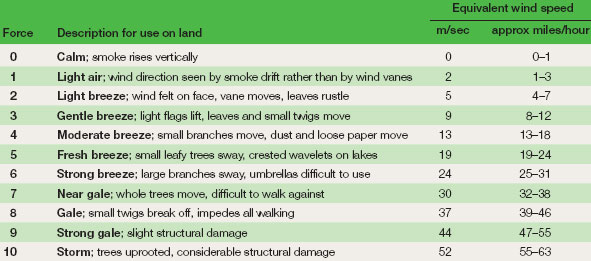Wind
ContentWind speed is measured with an anemometer, which is made up of three hemispherical cups on a vertical shaft ideally set 10 metres above the ground (see Figures 1.7 and 2.1). The wind puts a greater pressure on the inside of the concave surface than on the convex one so that the shaft is spun round; the rotation is displayed on a dial usually calibrated in knots (nautical miles per hour) or metres per second. An older and still much used visual method is the Beaufort Scale; originally based on observations made at sea, it is used to indicate the wind forces at sea or on land (see Table 2.7).
Wind direction is indicated with a wind vane, which is often combined with an anemometer. Decorative wind vanes are a familiar sight, but the standard meteorological design comprises a pointer with a streamlined vertical plate on one end mounted so that it can rotate freely. The arrow shape points into the wind and the movements over a minute or so are averaged. The direction the wind is coming from is recorded as the number of degrees read clockwise from true north, i.e. a westerly wind is given as 270, south-easterly as 135 and a northerly one as 360 (000 is used for recording no wind). |





